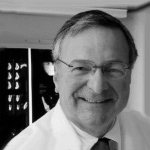Periodontal Prosthesis: Yesterday, Today, and Tomorrow
September 22, 2018 • Philadelphia, Pennsylvania • 7 Live CEU
7:00 – 8:00 AM |
Registration |
8:00 – 8:15 PM |
Welcome and Opening Remarks – Mario Vilardi, DMD |
8:15 – 9:00 AM |
The History of Perio-Prosthesis – Howard P. Fraiman, DMD |
| 9:00 – 10:30 AM | The Role of Walter Cohen and Mort Amsterdam in the Development of Periodontal Medicine – Robert J. Genco, DDS, PhD |
10:30 – 10:45 AM |
Break |
10:45 – 12:15 PM |
Lessons Learned from Perio-Prothesis: Tooth Replacement and the Pink Dilemma – David Garber, DMD |
12:15 – 1:30 PM |
Lunch Break |
1:30 – 3:00 PM |
Periodontists Should Still Be Saving Teeth – Paul S. Rosen, DMD, MS |
3:00 – 3:15 PM |
Break |
| 3:15 – 5:00 PM | Does Dataset Match Your Mindset: Understanding Clinical Failures – John C. Kois, DMD, MSD |
5:00 – 5:30 PM |
Break |
5:30 – 6:30 PM |
Cocktail Reception |
6:30 – 9:00 PM |
Gala Dinner |

For housing and reservation information at The Westin Philadelphia, click here or call: 844-279-5413 and reference the Cohen Amsterdam Education Foundation.





